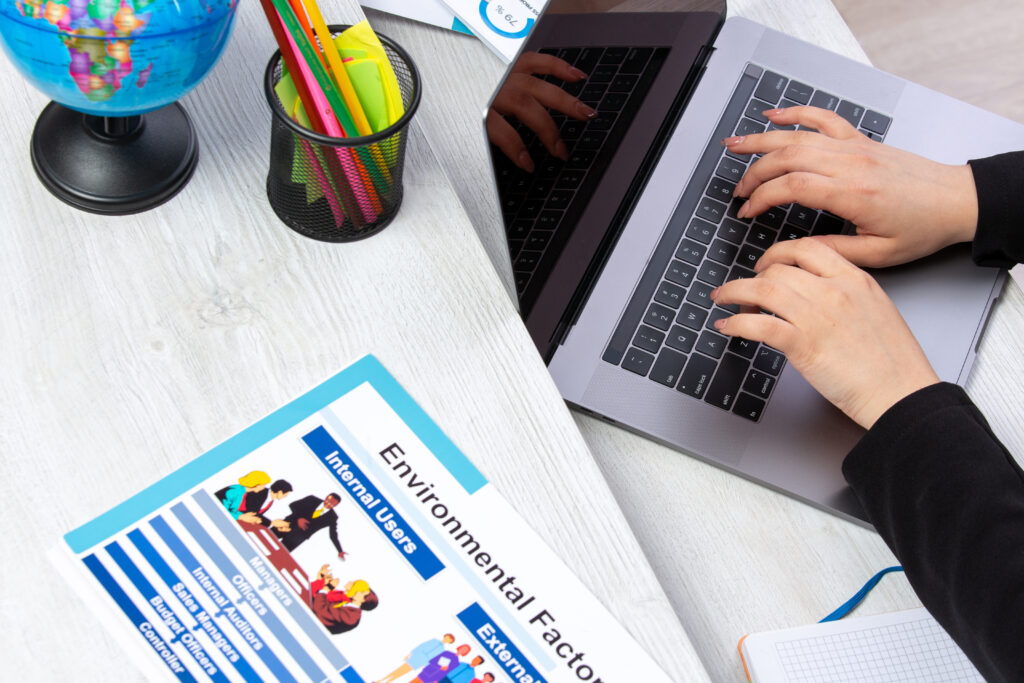The web is full of lists, but few cut through the noise. This latest online tool guide ZardGadjets is a practical, human-first collection of gadgets, software, and websites that genuinely make work and study easier. Every pick is here because it’s useful, has a reasonable learning curve, and offers good value over time. I’ve drawn on hands-on experience and well-regarded sources known for testing rigor and clear methodologies, such as long-term review outlets, recognized engineering blogs, and hardware testing publications. No hype—just tools that earn their place in your bag or dock.
Quick picks
If you want the fastest path to a better setup, start here. Each pick serves a clear job and is easy to integrate into daily routines. Noise-canceling earbuds reduce distraction in open spaces and during commutes, a compact power bank with fast charging keeps your phone alive through late classes or long field days, and an e‑ink tablet or note‑taking slate helps you capture ideas without screen fatigue. A portable SSD speeds up backups and transfers; a multi‑port USB‑C hub solves the one‑port laptop problem; an ergonomic wireless mouse reduces strain; a foldable laptop stand improves posture; a solid 1080p webcam handles low light better than built-ins; smart tracker tags save time lost to misplaced keys; and an LED desk light with eye‑care modes keeps late-night study sessions comfortable. Choose based on your ecosystem and budget, and favor durable materials and replaceable cables so your gear lasts.
Students’ gadgets
Students benefit most from gear that reduces friction. An e‑ink note device can keep focus on reading and markups, while a tablet with a good stylus is excellent for diagrams and math. Smart pens paired with OCR apps convert handwritten notes to searchable text, saving hours later. For organization, cloud notebooks keep everything synced across laptop and phone, and simple timers or focus apps support time-boxed study sessions. In the backpack: a USB‑C hub, a reliable 65W charger, and short braided cables cover library, lab, and dorm. Ergonomics matter too—folding stands paired with an external keyboard help avoid neck strain during long writing sessions. Look for student discounts on software, refurbished laptops from reputable retailers, and extended warranties that include accidental damage, because campus life is unpredictable.
Developer blogs
For developers, the right blogs are a steady drip of insight rather than noise. What matters is depth, cadence, and transparency. Engineering blogs from major companies often provide production lessons you can reuse: incident writeups, scaling tactics, performance tuning, and reliability culture. Community-driven platforms expose trends and patterns across many stacks, while framework-specific sources help you stay current without chasing every headline. Tooling and operations content—from version control to continuous delivery to cloud-native practices—clarifies best practices, and security-minded sources keep you aware of common pitfalls like authentication flows, secrets management, and supply chain risks. Build a reading routine that blends theory, code samples, and postmortems. A good mix keeps you informed without burning time.
Gadget websites
Curated gadget sites vary widely in rigor. Some focus on discovery, highlighting crowdfunded or niche products that might solve specific problems you didn’t know you had. Others run long-term testing, publishing updates after months of use, which tends to surface build-quality issues, battery health realities, and real-world failure points. Broad technology publications provide context—how a device fits into current standards, ecosystems, and privacy considerations—while platform-specific outlets cover deep compatibility questions for Android, iOS, or Windows users. When reading, watch for testing methodology: repeatable tests, clear criteria, measured performance, and direct comparisons. Be skeptical of “best” lists that don’t explain why or how they tested. Sponsored placements should be clearly marked. The goal isn’t to chase novelty but to find durable, dependable tools.
Top 20 tech sites
A balanced set of information sources saves time and improves decisions. For news and analysis, pick a handful that blend reporting with careful context: startup coverage, funding rounds, consumer electronics, and policy shifts that affect privacy or competition. For deeper technical literacy, look for publications that combine engineering rigor with accessible writing—sites that unpack networking, CPUs, GPUs, and web standards without skipping the details. Developer-centric resources are valuable for postmortems, architectural patterns, and practical tutorials. Hardware testing outlets that publish measured benchmarks and methodology help decode claims about battery life, thermal performance, and display quality. For learning, a mix of hands-on tutorials, structured course catalogs, and canonical references rounds out your stack. Bookmark wisely, prune often, and avoid duplicating the same news across five places.
Tool stack
A reliable tool stack covers notes, tasks, creation, collaboration, and security. For knowledge management, pick one note system and stick with it—what matters is searchability, low friction, and trustworthy sync. For tasks, use a lightweight app where you can quickly capture, tag, and review. Creation tools should match your work: a modern code editor with extensions for your stack, a design tool that supports components and collaboration, and a simple video editor for demos or lectures. Collaboration lives where your team or class does—keep it tidy with clear channel naming and quiet notification settings. For security hygiene, use a password manager, enable two-factor authentication (hardware keys where possible), keep automatic updates on, and maintain a backup routine that includes both local and cloud. Stability beats novelty in your core stack; change only when a new tool clearly reduces friction.
Buy better
Buying well is mostly about being clear on the job to be done. List must-haves and nice-to-haves before shopping. Consider a ladder of options—good, better, best—and decide where the value curve flattens for you. Check compatibility: ports, cables, Bluetooth versions, OS support, and accessory ecosystems. Look for repairability and modularity, like replaceable ear tips, standard cables, and user-accessible storage. Warranty terms, return windows, and support channels matter as much as specs. Students should stack discounts, and everyone should consider refurbished gear from trustworthy sources when budgets are tight; good refurb processes include battery health thresholds and full diagnostics. The goal is to purchase once and use daily without fiddling.

Mini reviews
A compact e‑ink tablet that syncs PDFs and annotations is transformative for reading-heavy courses and research. The strength is focus—minimal apps, strong battery life, and crisp text. The tradeoff is limited web and app support, so it’s best as a second device paired with your laptop. A 65W dual‑port GaN charger becomes a tiny travel essential; it replaces two bricks and stays cooler under load. Pair it with short, certified USB‑C cables and you have a reliable kit. A compact mechanical keyboard with soft switches can improve typing comfort for long sessions, and a programmable layout helps match shortcuts to your tools. It’s louder than a membrane keyboard, so consider your study or office environment. A 2TB portable SSD with hardware encryption keeps projects and footage safe and fast; just make sure your laptop supports the interface speeds advertised. Finally, a budget 1080p webcam with larger sensor and good firmware avoids the oversharp, noisy look common with built-ins; it’s a small investment that upgrades every call.
Dev kits
If you write code daily, standardize your setup. Start with a terminal you enjoy using and a shell configured with predictable aliases and completion. Version managers for runtimes keep projects clean. Containerization helps isolate dependencies; learn the basics and use templates. For cloud, begin with managed services with sensible limits and use infrastructure-as-code when projects graduate beyond one-off scripts. Monitoring and logging make debugging faster—use a lightweight stack locally and a hosted one for team projects. API clients support testing; keep collections versioned with your code. For documentation, store it near the code with clear examples and a living changelog. A good dev kit minimizes context switching and makes your environment reproducible on a new machine in under an hour.
Student kits
Students can build a capable setup at modest budgets. Under a low budget, grab a dependable wired headset for calls and lectures, a small power bank, and a foldable stand. Add a basic external mouse and short cables. At a mid-range budget, consider a portable SSD, a better webcam, and a dual‑port charger. For a larger budget, aim for a balanced laptop configuration with enough memory for your major, plus a comfortable keyboard and an external monitor for home use. Use campus deals for office suites, developer tools, and cloud credits. A well-made backpack with padded sleeves and a minimal cable pouch prevents small losses from turning into big headaches.
Stay current
It’s easy to drown in updates. Set a weekly routine: a short news pass, one deeper analysis or tutorial, and a small project or exercise. Keep notifications minimal and batch your reading. Revisit your subscriptions quarterly—unsubscribe from anything that repeats headlines or adds anxiety without insight. Save fewer links; build more small things that cement what you read. When in doubt, default to sources that publish methods and data, not just conclusions.
FAQs
Is discovery-focused curation worth your time?
It can be, especially for niche use cases, but treat everything as a draft idea until you see long-term testing or hands-on reports. Are
“top 10 must-have gadgets” lists useful?
They are a starting point, not an ending; combine them with checklists and return policies.
Where do startup news sites fit into a learning plan?
A brief weekly scan keeps you aware of platform shifts, funding trends, and product directions that might influence your stack or job search
. What’s the best blog mix for developers at different levels?
Early-career devs should favor tutorials and code-along posts, mid-level devs benefit from architecture case studies and reliability writeups, and senior devs often focus on incident analysis, culture, and system design tradeoffs.
Conclusion
The best tools reduce friction and disappear into your day. This latest online tool guide ZardGadjets focuses on choices that hold up under real use—gadgets that endure backpack life, software that speeds up work without locking you in, and websites that teach rather than shout. Start with a small change that removes a daily annoyance—a better charger, a tidy task system, or a more comfortable input device—and iterate. Over time, these choices compound into a setup that feels reliable, calm, and genuinely helpful.
Appendix
Latest online tool guide gadgets for students: prioritize note-taking devices, ergonomic stands, reliable charging, and discounts. Best gadget websites: balance discovery feeds with long-term test outlets, and watch methodology. TechCrunch: use for startup and funding context; skim weekly. Top 20 tech websites: blend news, deep dives, developer education, and hardware testing. Top 10 must-have gadgets: treat as a shortlist; verify with your needs and returns. Gadget Flow: a useful discovery stream for niche products and early trends. Best tech blogs for developers: choose a mix of engineering case studies, framework updates, and security-focused sources, and build a calm reading routine that supports practice.




















































